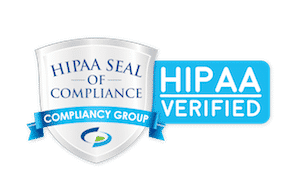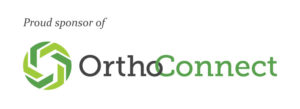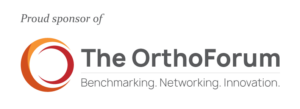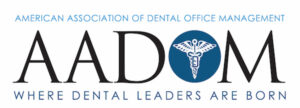Most of us are used to booking dinner reservations, spa days, or hotel rooms online without giving it a second thought. When it comes to healthcare, the trend of patient self-scheduling has been slower to catch on. Still, more and more healthcare organizations are now realizing its potential, not only for improving patient convenience but also for boosting their operational efficiency.
If you’re still on the fence, let’s remind you that 73% of patients want to self-schedule, but it’s not just about ease for patients. There’s significant cost-saving when you reduce the staff necessary for answering continuous calls.
Need an even more compelling reason? With the right tools, you eliminate guessing and track how patients interact with your healthcare organization, ensuring that tangible data supports the decision to adopt patient self-scheduling.
The Simplicity of Patient Self-Scheduling
Self-scheduling allows patients to book their doctor’s appointments online, from their mobile devices, or through a patient portal — without needing to make a phone call.
For many, the act of dialing a doctor’s office to make an appointment might seem like a minor task, but some patients work long hours or can’t make personal calls during the day, for example. One survey showed that a staggering 61% of patients have skipped going to the doctor simply because the act of scheduling proved to be too much of a hassle. This paints a concerning picture, especially when there’s an online alternative that’s a straightforward solution.
The 24/7 availability of patient self-scheduling ensures that patients can make appointments not just at their convenience, but also at their preferred time. Also, while scheduling appointments over the phone takes more than eight minutes, and these calls are transferred 63% of the time, scheduling an appointment online may take under a minute.
However, the advantages of patient self-scheduling aren’t solely based on time savings and convenience. How patients schedule appointments may set the tone for the rest of their experience with you and your practice. Smooth appointment-making establishes a foundation of trust and respect and, by the time they step into the office, they’re already appreciative of your commitment to patient-centric service.
Let’s not forget that a patient’s journey isn’t limited to the duration of their office visit. It begins much earlier, from the moment they decide to seek medical assistance, and extends beyond their actual appointment. Each touchpoint, including scheduling, contributes to their overall experience and you need to recognize and optimize each of them. Patient self-scheduling is an integral part of this broad process, enhancing both convenience and experience.
Patient Self-Scheduling Benefits for Providers
For patients, the advantages of self-scheduling are evident — flexibility, accessibility, and autonomy in managing their health. However, healthcare providers stand to gain substantially as well. Implementing patient self-scheduling allows you to transform administrative workflows, enhance operational efficiencies, and improve the overall quality of care delivery.
Reduce No-Shows
For healthcare organizations, no-shows are more than an inconvenience, they’re also costly. A missed appointment means a slot that could have been filled by another patient, representing lost revenue for you.
On the other hand, many digital scheduling tools have an automated reminder feature, allowing you to remind patients of their appointments without needing to pick up the phone to call them. Instead, an automated and personalized message can be sent to the patient via email or text with details about their upcoming appointment and instructions on how to confirm, cancel, or reschedule.
Also, when patients book their own appointments, they tend to feel a stronger commitment to attending. In fact, statistics indicate that patients are 9% more likely to keep the appointments they schedule themselves. Combine this with the efficiency of automated reminders, and you can significantly reduce no-show rates and improve patient engagement.
Increase Appointments
If you offer traditional scheduling options only, you may lose patients who prefer not to make a phone call to schedule their appointments. Yet, if you adopt patient self-scheduling, you’ll probably see a tangible increase in the number of appointments.
Healthgrades reports that practices with an online scheduling option scheduled 24% more appointments than those that only book by phone. The possibility of after-hours booking and the rising number of new patients who prefer online scheduling are additional reasons for this rising trend.
Reduce Scheduling Errors
When appointment scheduling is done manually by your staff, errors are bound to happen. From unintentional double-bookings to miscommunications about the date and time of an appointment, they can disrupt operations and lead to patient dissatisfaction. However, with patient self-scheduling, many of these issues can be avoided.
Once appointment bookings are completed digitally and added to your practice’s calendar automatically, your systems capture the personal information and appointment time in real time, so there’s no room for human errors.
Streamline Operational Efficiency
As your practice grows, scaling operations, especially administrative ones, becomes essential. Among these tasks, traditional appointment scheduling stands out as particularly time-consuming.
Patient self-scheduling system cuts through the complications of traditional scheduling, offering a streamlined approach. Instead of juggling phone lines, your staff can rely on an automated system that allows patients to select, modify, or cancel appointments at their convenience. This reduces the chance of errors and significantly decreases the overhead time spent on scheduling.
With a smoother operational flow, you can redirect resources previously allocated for managing appointments to enhancing patient care and experience. In addition to this, the reduced administrative burden can lead to a happier, more focused staff, which inevitably benefits the patients they serve. In turn, you ensure that the quality of patient care at your practice remains uncompromised.
Is Patient Self-Scheduling Really Effective?
While the advantages of patient self-scheduling are evident in both patient experience and operational efficiency, you may still be worried about one crucial aspect — the ability to track and measure its effectiveness. However, in addition to simplifying the appointment process, it’s also possible to use the data and insights that come with patient self-scheduling.
With the right tracking capabilities, you can monitor how patients navigate the self-scheduling system. You can see when patients are most likely to book, which slots are favored, which services have the highest demand, or if patients abandon the process before completion. In other words, while patient self-scheduling is a transformative tool on its own, when paired with tracking, it becomes an even more powerful asset.
If you find it too challenging to measure and improve the effectiveness of self-scheduling, you can rely on SocialClimb. With our tracking feature, you’re not just getting data, you’re also gaining a deeper understanding of your patients’ needs and preferences. In turn, you can change the entire scheduling experience, making it not just efficient, but also tailored to the expectations and requirements of your patient base.
This way, you can make sure that the leap into digital transformation isn’t a blind one. By combining the conveniences of self-scheduling with the deep insights from SocialClimb, you can both adopt and adapt to keep your services optimized for the best patient outcomes.











